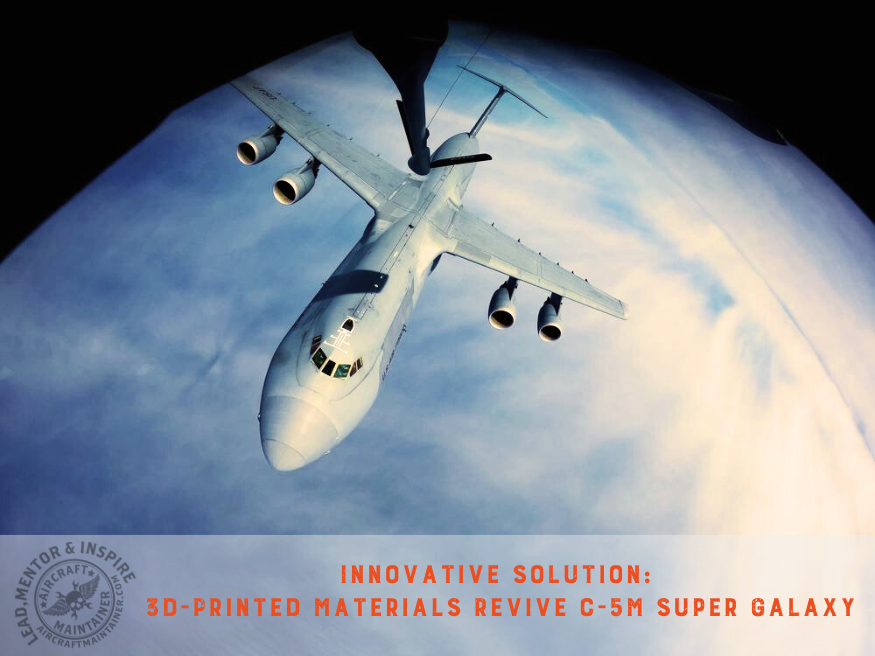A New Breakthrough for Parts and Maintenance
Recently, engineers and engineering support contractors from the C-5 System Program Office at Robins AFB, Georgia, along with maintainers from the 60th Maintenance Squadron and 349th Aircraft Maintenance Squadron, completed work to modify an internal part for a C-5M Super Galaxy by
incorporating 3D-printed materials.
The printed materials were chosen to be used after maintainers reviewed the C-5M aircraft post-flight and noted some essential pieces were missing. It was determined specifically that a section of the hump-shaped aerodynamic fairing panel was missing. Wedges and blocks were printed to be added onto the C-5’s fairings. Fairings are structural components that aid in lowering an aircraft’s drag. The blocks, which normally provide internal support to the hump panel, were splitting apart, making the aircraft non-mission capable.
To get the aircraft fixed as soon as possible, a proposal was made to integrate 3D-printed parts made from Antero 800NA, a new thermoplastic material, into the aircraft repair. Although this was a relatively novel suggestion, the team decided to move forward with it and then reinspect the craft and do further maintenance once it was flown back to Travis AFB in California.
Once in Travis, the procedure entailed entirely removing the old parts on the C-5 followed by re-bonding the new 3D printed pieces, then re-installing all the panels that were modified. It’s a lengthy process, even with using the new parts. However, the advantage to using the 3D printed materials means that the parts can be built and ready on base, and there is no possibility for the parts to not be in stock elsewhere.
It seems that the thermoplastic material, Antero 800NA, is holding up very well. All the aircraft that have used this option seem to be in excellent condition, showing that this method seems to be a good option to save both time and money.
Using 3D in Other Areas
The C-5M Super Galaxy isn’t the only place the Air Force is using 3D printed materials and finding success in both reduction of cost and faster turnaround time. There is now a new steel that has been Air Force developed that can be 3D printed. The new steel is low alloy, and it accomplishes the two things that were originally the goal. The steel is ready to be used for any area the military deems it necessary.
Originally, steel was very difficult to make at a lower cost due to the materials involved in its manufacturing. However, USAF-96 steel has a low carbon, low nickel alloy composition and does not contain tungsten or cobalt. In addition to having lower manufacturing costs than previous techniques, USAF-96 Steel may be made utilizing conventional air-melt production procedures.
Additionally, the Strategic Automated Command Control System (SACCS) of the US Air Force (USAF) can now be repaired using a 3D printer. The Air Force bought a 3D printer to create a replacement when a supplier ceased producing a red fault indicator lens cap to cover the lights on the SACCS system. The USAF recovered the cost of the printer and scanner by using technology to create the first cap, saving more than $4,000 in the process.
A Green Light on 3D
With all of this success, it is highly likely 3D printers will be used more often and in a wider capacity by the Air Force. The more pieces and parts the Air Force can produce independently, the more they will save, not only on production of materials, but also avoiding extra costs like transport and packaging. It will cut out any extra waiting time and bypass problems with part availability. Technology breakthroughs like utilizing 3D printer capabilities are a positive illustration of how experimentation and innovation may successfully give the Air Force useful advantages.
Enjoy reading this post? Check out our latest topic
HERE.
Want to read more about up-and-coming military technology like artificial blood? Click HERE to check it out.


